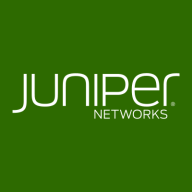


Juniper SRX Series Firewall and Cisco Meraki MX are key players in the firewall market. Juniper SRX appears to have an edge in complex environments with its advanced routing features, while Cisco Meraki MX offers ease of management with a cloud-based approach.
Features: Juniper SRX is notable for its robust routing capabilities, integration in mixed vendor settings due to its UNIX-based OS, and advanced features like VPN, deep packet inspection, and Application Quality of Service (AppQoS). Cisco Meraki MX shines with its cloud management, SD-WAN features, and auto failover, making deployment and management straightforward.
Room for Improvement: Juniper SRX needs better GUI functionality, third-party interoperability, and more comprehensive reporting tools. Cisco Meraki MX could enhance its SSL inspection, VPN client management, and introduce more flexible licensing options.
Ease of Deployment and Customer Service: Juniper SRX offers versatile deployment for on-premises and hybrid environments with moderate technical support. Cisco Meraki MX simplifies cloud-based deployment and enjoys well-regarded customer support, though its Cisco-centric ecosystem can be limiting.
Pricing and ROI: Juniper SRX provides good value with no recurring licensing fees, though initial costs may be high. Cisco Meraki MX tends to be more expensive due to its advanced cloud features, but the lower IT overhead can offset costs, making it appealing for those prioritizing ease of management.
Clients are now comfortable and not wasting productive hours on IT support.
The automation part is giving us a cost benefit and speed; we can react faster.
It's a very useful tool to mitigate and protect your enterprise.
The quick resolution of issues with Fortinet FortiGate is due to the support of the company and the fact that the equipment is easy to work with.
I would rate the technical support for Fortinet FortiGate a ten out of ten.
As a solution provider, when I encounter problems, I connect directly with Fortinet support, and they provide solutions within a very short time.
When we raise a ticket with Meraki MX, they instantly become available to support us for configurations or troubleshooting.
Cisco's TAC support for Cisco Meraki MX is excellent because no other OEM provides support at this level.
Cisco is one of the best vendors in the market.
Technical support is very good.
They scale up really well from smaller models like the FortiGate 40 and 50 to bigger sites with the FortiGate 100 for more throughput - up to enterprise datacenters.
The variation comes in terms of the interfaces and throughputs, but from a security perspective, you get the same benefit, irrespective of whether you have an entry-level unit or an enterprise.
We determine sizing based on multiple factors: number of users, available links, traffic types, server count, services in use, and whether services will be published.
When you have hundreds of thousands of people it is very difficult to scale in Meraki.
We have Juniper solutions, and I would say the Juniper solutions can scale better, however, this solution is still very scalable.
The biggest one is for 120 users, but our company is a big one.
We're experiencing 99.999% availability consistently.
I would rate the stability of Fortinet FortiGate a ten out of ten.
Currently, we are experiencing a general outage of one of the main internet service providers of the Dominican Republic, and we have not been impacted in our operations because with SD-WAN, we have another internet service provider and we are working with the second WAN connection without any disruption.
There have been no outages, no stability issues, and we have not found any vulnerabilities during security audits.
The solution has absolutely high stability.
When considering Sophos XG, which we also use, the logging and reporting functionality is notably more efficient.
These sessions should be around five to ten minutes long, allowing users and partners to quickly grasp the information without disrupting their daily tasks.
The solution should be able to implement machine learning and analytics of all the logs for threat detection and protection.
It should automatically remediate and find out the issue and then resolve it on its own without interrupting the work of the employees.
Data is the only path, so optimization is essential.
An improvement would be to use Cisco Meraki MX as a software solution as well, which might reduce the cost.
With a better user interface and graphical interface, the Juniper SRX Series Firewall could be a superior solution compared to what it is now.
With my extensive experience with the Juniper SRX Series Firewall, the robustness of the SD-Cloud or Security Director interface and overall functionality needs to be improved to compete with leading firewall solutions.
Last year, I renewed the support for three years, which can sometimes be expensive but depends on the security benefits and how it helps us.
It offers cost savings as it is generally cheaper than the competition.
It is about 20% cheaper.
I get it for $25,000, a device that can connect up to 75-100 users, whereas in Meraki MX, it goes to 75,000-80,000 per access point.
The price could be reduced by around 30% to make it more comfortable.
In terms of pricing, I would say it is not the cheapest, but it was comparable to the others.
The Juniper SRX Series Firewall is affordable and cost-effective.
These features help reduce our downtime, manage the ISPs, and deploy SLAs for all the website traffic.
The most valuable feature of FortiGate is FortiView which provides proactive monitoring.
We got a firewall and gave an SSL VPN to my client to connect to their servers, after which, such kind of activities involving ransomware attacks stopped.
Meraki MX is among those top solutions in their exceptional approach towards VPN-less, Zero Trust client access to office private networks.
Advanced security is the second tier of Cisco Meraki MX. It brings you the main next-generation firewalling features such as URL filtering, advanced malware protection, and threat protection.
We understand that Cisco solutions are very reliable, and we really like the simple management.
The routing, Layer 2, 3, 4 solutions in the network layers are valuable features.
Juniper SRX Series Firewall helps in terms of network security for my customers by protecting end-users from any form of cyber attack or threat, with a good database that updates and pushes out signatures to defend against threats.
| Product | Market Share (%) |
|---|---|
| Fortinet FortiGate | 18.7% |
| Cisco Meraki MX | 3.4% |
| Juniper SRX Series Firewall | 1.8% |
| Other | 76.1% |



| Company Size | Count |
|---|---|
| Small Business | 357 |
| Midsize Enterprise | 133 |
| Large Enterprise | 188 |
| Company Size | Count |
|---|---|
| Small Business | 42 |
| Midsize Enterprise | 19 |
| Large Enterprise | 16 |
| Company Size | Count |
|---|---|
| Small Business | 45 |
| Midsize Enterprise | 20 |
| Large Enterprise | 32 |
Fortinet FortiGate is a versatile network security tool offering features like VPN, firewall, web filtering, intrusion prevention, and scalability. It is known for its performance and integration with other Fortinet products, making it a preferred choice for robust cybersecurity.
Fortinet FortiGate stands out as a comprehensive cybersecurity solution with strong performance and ease of configuration. It delivers unified threat management, integrating features such as dynamic routing, SD-WAN support, and centralized management. Despite its strengths, improvements in the web interface's stability, pricing structures, and reporting capabilities are needed. Users seek better integration with third-party tools and automation advancements to enhance the experience further. These enhancements, alongside improvements in bandwidth management and the reduction of licensing costs, are points of interest for users looking to capitalize on FortiGate's extensive capabilities.
What are Fortinet FortiGate's key features?Fortinet FortiGate is widely implemented across industries as a primary firewall system for securing internet gateways and safeguarding data centers. It supports businesses in achieving SD-WAN integration and enhances cybersecurity by providing essential features like antivirus, web filtering, and application control. Enterprises utilize FortiGate for securing remote connections and ensuring compliance with security standards, making it adaptable for different network sizes and industries.
Cisco Meraki MX offers cloud-managed security with user-friendly setup and efficient management, enhancing VPN and firewall functionalities for businesses.
Cisco Meraki MX is known for its robust cloud-based network management, featuring AutoVPN, SD-WAN, and advanced security. Its centralized control over firewall, traffic shaping, and monitoring ensures excellent connectivity and security. The interface allows easy management by non-technical staff, offering remote access and seamless network performance through real-time alerts and troubleshooting. It supports global connectivity with minimal effort, addressing needs across small to enterprise environments. Despite its strengths, users point out areas needing improvement like load balancing, VPN features, more flexible logging, and session capabilities. Pricing, integration limits, and licensing need enhancement.
What are the key features of Cisco Meraki MX?In industries like retail, finance, and education, Cisco Meraki MX provides enhanced security and connectivity. Retail chains benefit from easy VPN setups for secure multi-site networking, while educational institutions find value in its ability to manage large campuses efficiently. Financial services leverage its robust security features to protect sensitive data, ensuring compliance and trust.
Juniper SRX is a next-generation security solution that enables users to expand and secure their networks without incurring heavy costs or sacrificing performance.
Benefits of Juniper SRX
Some of the benefits of using Juniper SRX include:
Reviews from Real Users
Juniper SRX stands out among their competitors for a number of reasons. Two major ones are their central management capabilities and the robustness of their suite of security features. Juniper SRX is designed to make it easy for users to take control of their network’s security. From one location, administrators can manage all aspects of their infrastructure’s security. The many features that it offers allows users to tailor their security to meet their specific needs.
Shashidhara N., director of technology solutions & services at Connectivity IT Services Private Limited, writes, “On the SRX box, it has what I call a one model concept for security. I work especially with hybrid environments. With an SRX we have a single management dashboard. We can manage the internal framework easily with the centralized management component. You can work with threat prevention, you can work with integration, you can work with traffic management. Another good part about SRX is that you have opportunities for automation. Another thing that is very good is that all the operating systems for all Juniper boxes are the same. You do not work on different operating systems using different boxes.”
Pradip J., the owner of Shree Atharva Sales Corporation, writes, “It is a complete security bundle. The cloud-based Sky Advanced Threat Prevention feature is very valuable. I am 100% satisfied with the performance of the Juniper firewall. It has a very good throughput. It works very fine. We use our firewall as a site-to-site VPN or Software-Defined Wide Area Network (SD-WAN). In both cases, it has a very good and optimum performance.Their service support is very good in India. I get really good support from the Juniper team."
We monitor all Firewalls reviews to prevent fraudulent reviews and keep review quality high. We do not post reviews by company employees or direct competitors. We validate each review for authenticity via cross-reference with LinkedIn, and personal follow-up with the reviewer when necessary.